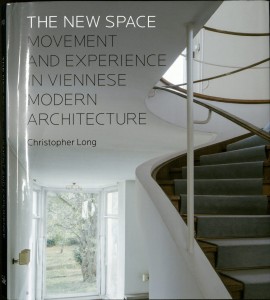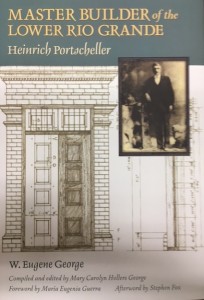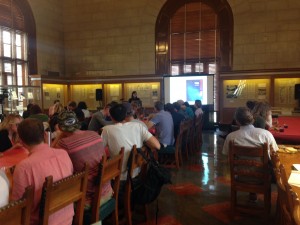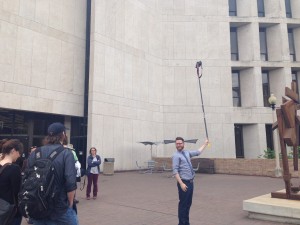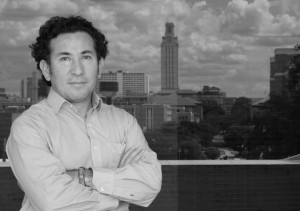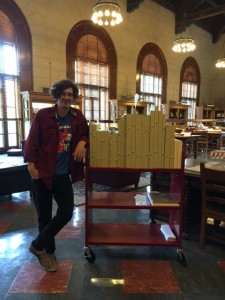While undertaking research for an upcoming exhibit at the Architecture and Planning Library, Nancy Sparrow discovered an article in The Daily Texan from 1937 entitled, “New Art Books On Architecture Library Shelves” (Vol. 38, February 26, 1937, pg. 1, 3). She sent me a copy of the article, knowing how much I would enjoy reading it. The article listed 10 new titles to the Architecture Library. Curious to know if the books were still part of the collection, I did a bit of looking. I identified 9 of the 10; however, not all remain as part of the Architecture and Planning Library’s collections.
- Romanesque Sculpture of the Pilgrimage Roads – A. Kingsley Porter: The ten volume set from 1923 is part of the Special Collections at Fine Arts.
- Historic Dress in America – Elisabeth McClellan: Several copies of this work can be found on campus whether at Fine Arts, PCL, or the HRC.
- Rooftrees; or The Architectural History of an American Family – Philip Lippincott Goodwin: The book published in 1933 remains part of APL’s collection; however, it is housed in off site storage.
- Florentine Frescoes – Tancred Borenius and Modern Sculpture – Herbert Maryon: A copy of each of these works still remains on the shelf at the Fine Arts Library; however, APL’s copy can be requested from off site storage.
- Currier and Ives, a manual for collections: an alphabetical catalogue of all known prints by C. Currier, N. Currier and Currier & Ives, with auction prices from sales of the past forty years and current values taken from authoritative sources. Included is a complete classified checklist and twenty-four full pages in colour and black and white of important prints – Jane Cooper Bland: The only copy of Bland’s work is located at the HRC.
- French Painting of the Nineteenth Century – S. Rocheblave: This work remains part of APL’s collection, though housed in off site storage. In the article, the author is listed as Rocheblanc; however, this appears to be a misprint (“New Art Books On Architecture Library Shelves,” The Daily Texan, February 26, 1937, 3, accessed 2/6/2917). APL also has the French edition in storage.
- One of the works was simply listed as “Le Corbusier.” (“New Art Books On Architecture Library Shelves,” The Daily Texan, February 26, 1937, 3, accessed 2/6/2917). Without more information about the work, I was unable to identify which one the article references.
Two of the books are still part of APL’s onsite collections, so I decided to pull them from the stacks.
Hoffman, Malvina. Heads and Tales. New York: Charles Scribner’s Sons: 1936. (General collection)
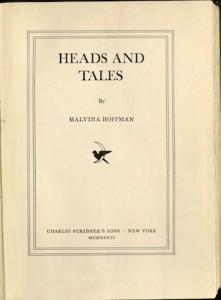 The 1937 article offers a brief description of the work. According to the author: In “Heads and Tales” Malvina Hoffman, American sculptress, tells of her experiences in following her career over the world. It contains photographs of sculpture and of life in various parts of the world, particularly in Africa (“New Art Books On Architecture Library Shelves,” The Daily Texan, February 26, 1937, 1 and 3, accessed 2/6/2917). Hoffman offers a biographical narrative documenting her work on the statues for the Hall of Man in the Field Museum in Chicago. She writes of her commission –
The 1937 article offers a brief description of the work. According to the author: In “Heads and Tales” Malvina Hoffman, American sculptress, tells of her experiences in following her career over the world. It contains photographs of sculpture and of life in various parts of the world, particularly in Africa (“New Art Books On Architecture Library Shelves,” The Daily Texan, February 26, 1937, 1 and 3, accessed 2/6/2917). Hoffman offers a biographical narrative documenting her work on the statues for the Hall of Man in the Field Museum in Chicago. She writes of her commission –
Sudden vistas of remote islands and mysterious horizons flooded over my imagination – escape from city life, discovery of new worlds, conflict with the elements. Infinite new windows of life seemed to open before me.
What lay beyond those windows is set down in this book, which describes my adventures and experiences of “head-hunting” in the near and far corners of the earth – and how the hundred racial types in the “Hall of Man” of the Field Museum in Chicago were selected and modelled on the road. (Hoffman, Heads and Tales, 3).
Unaware of Malvina Hoffman or her work until today, I undertook a quick search in the catalog and jstor looking for recent scholarship about the artist. You might consider Marianne Kinkel’s book, Races of Mankind: the Sculpture of Malvina Hoffman or Rebecca Peabody’s article, “Race and Literary Sculpture in Malvina Hoffman’s Heads and Tales,” in the Getty Research Journal (vol. 5, 2013, 119-132).
Lawrie, Lee. Sculpture. Cleveland, Ohio: J. H. Jansen, 1936. (Special Collections)
APL has two copies of Sculpture, one in off site storage and copy two 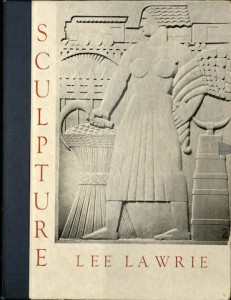 held in Special Collections. The second copy was a gift by Arthur E. Thomas. While copy two was immediately accessible in Special Collections, the first copy is probably the new book identified in The Daily Texan.
held in Special Collections. The second copy was a gift by Arthur E. Thomas. While copy two was immediately accessible in Special Collections, the first copy is probably the new book identified in The Daily Texan.
Like Hoffman, Lee Lawrie offers Sculpture as documentation of his work. He provides 48 plates and a brief introduction, which he uses to express his opinion about modern sculpture. He concludes –
Also it is not meant that a sculptor cannot be a creator. Although no new ways of designing and modelling are available, the personal characteristics that stamp each sculptor’s work, when applied to an original theme and architectural problem, make it a creation. What will be done when the sculptors have full play with the tremendous and dramatic themes that are to be recorded of our age and scene can only be imagined. The opportunity for this expression will no doubt bring forth works equal to those of the great monuments of the past. (Foreword, pg. 2)
While not familiar with Lawrie by name, I did recognize his work as I looked through the plates – more familiar with the buildings themselves. While a contemporary of Hoffman, I was struck by their stylistically different approaches to sculpture rather than those governed by medium or type.


